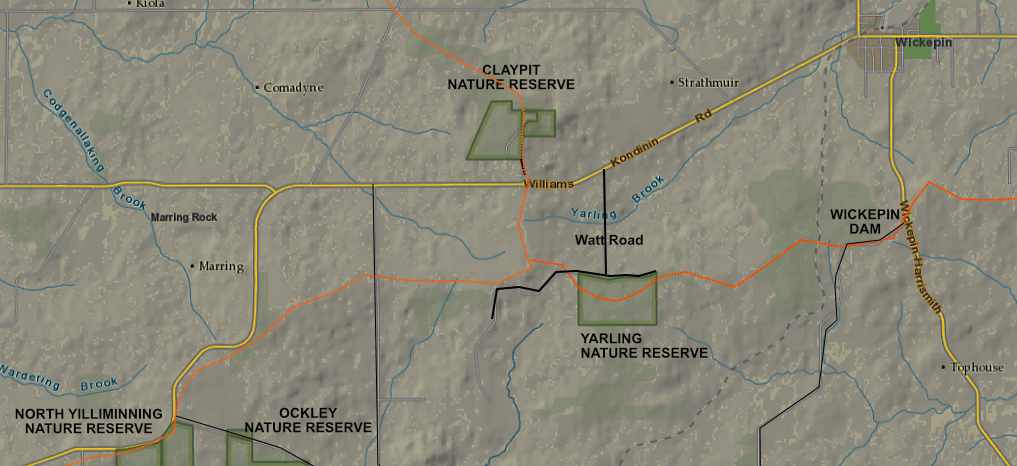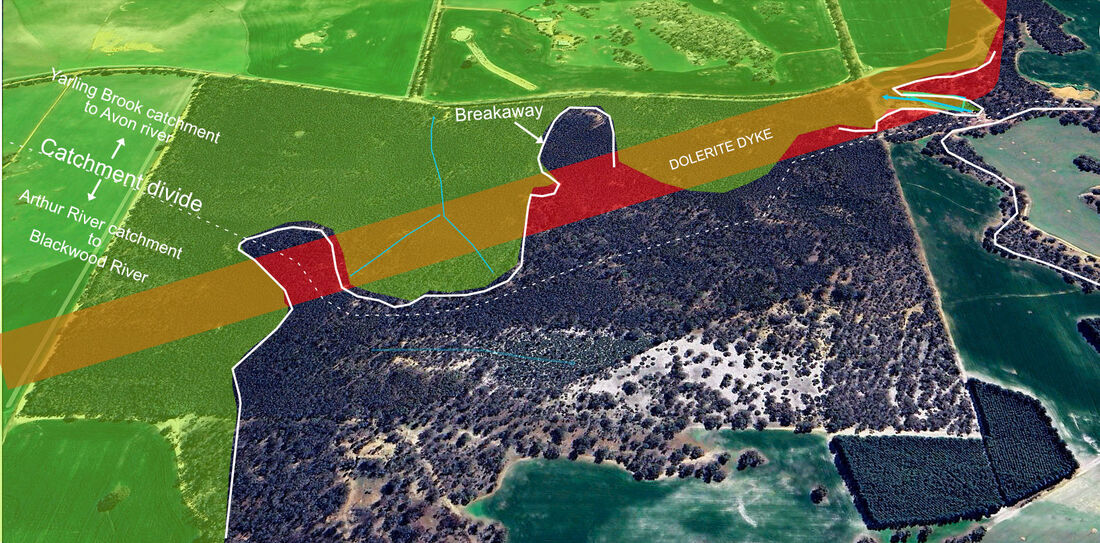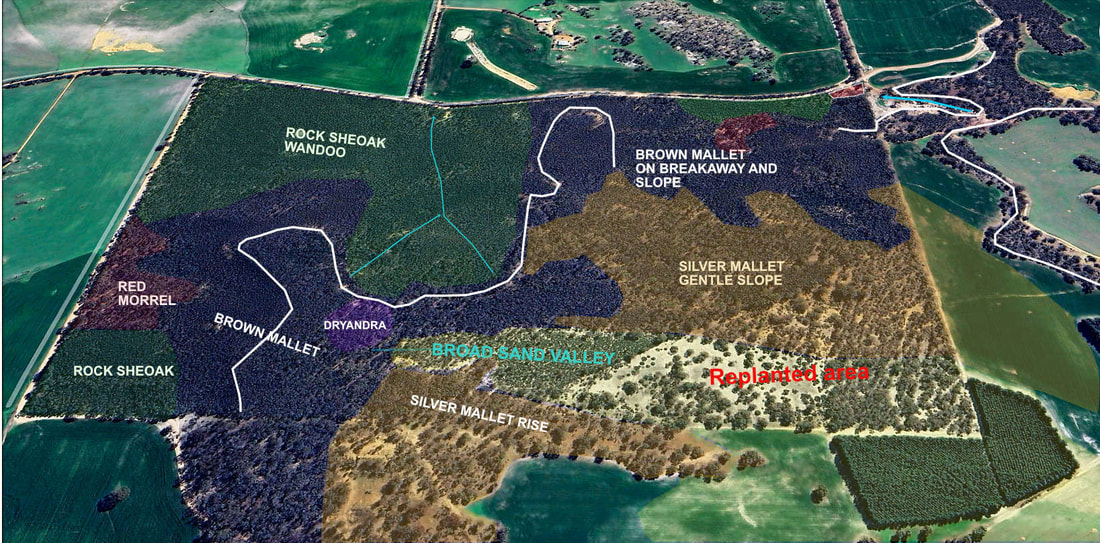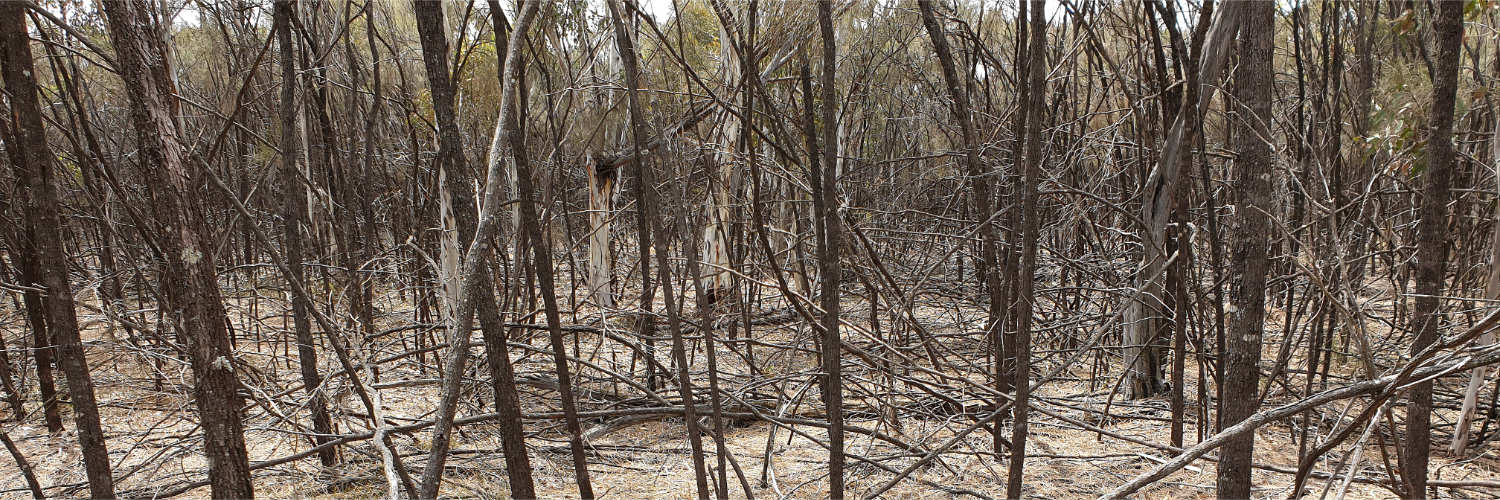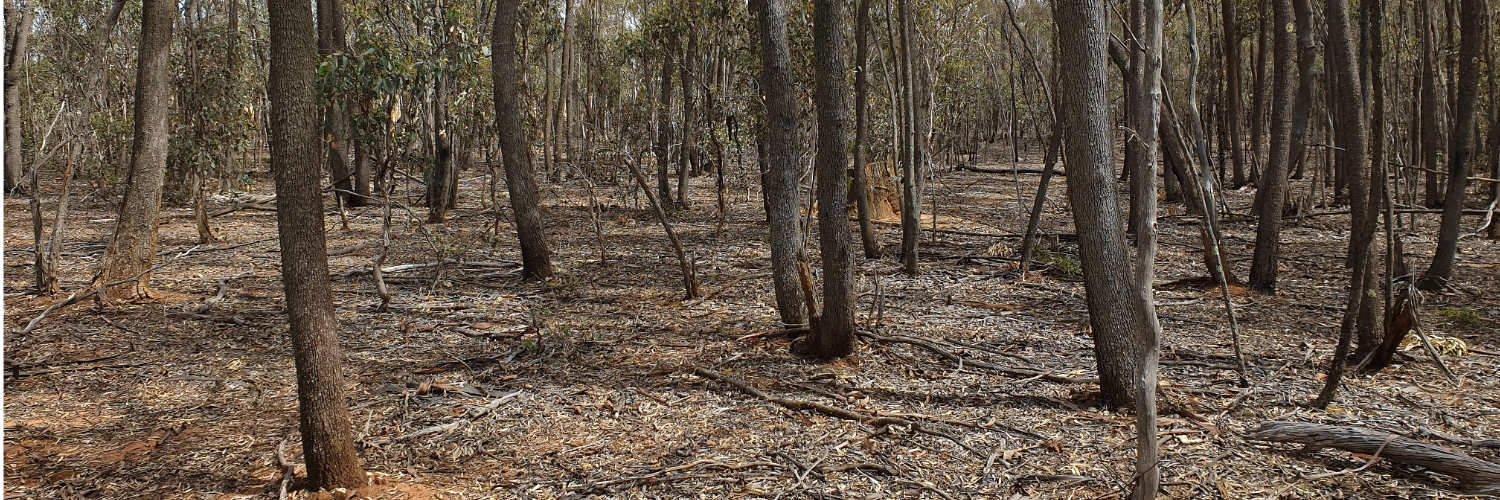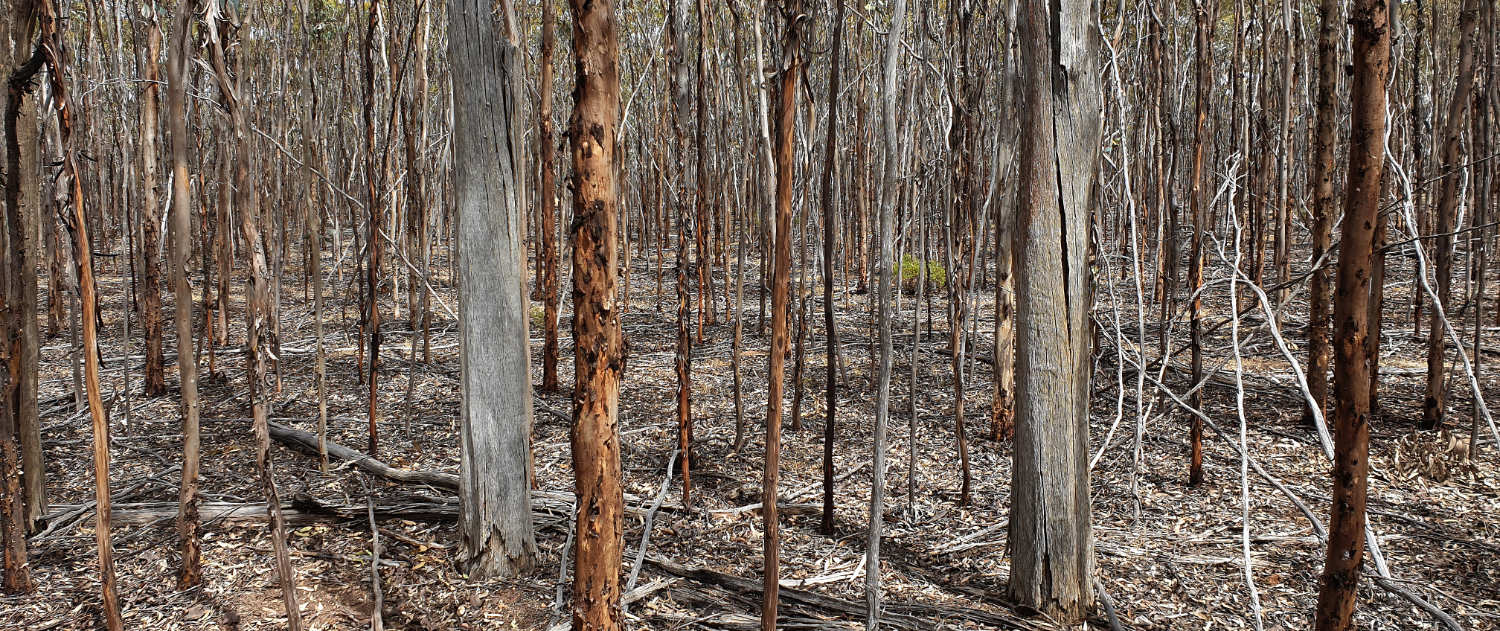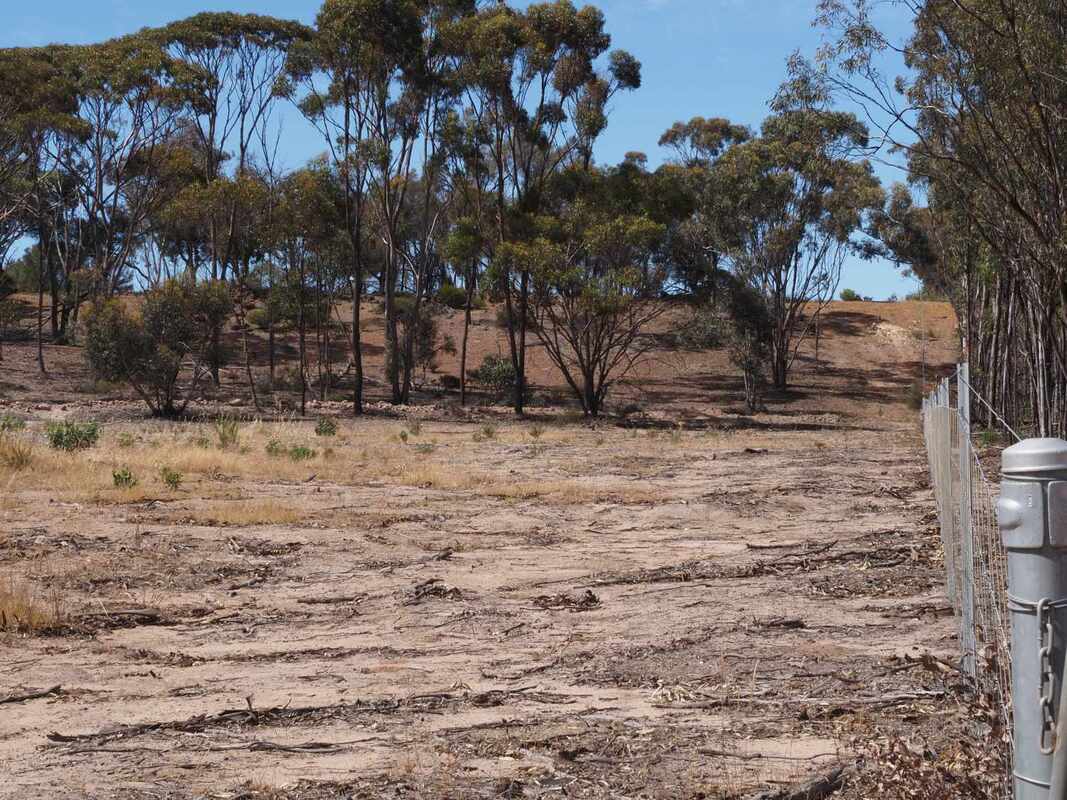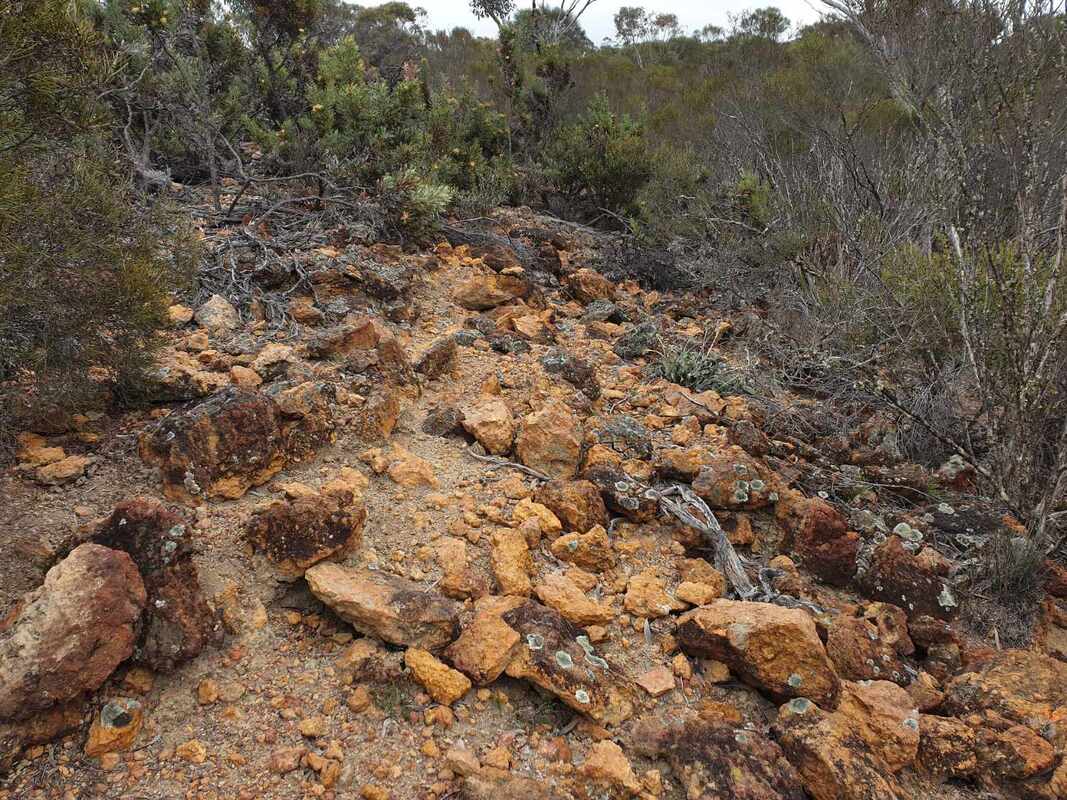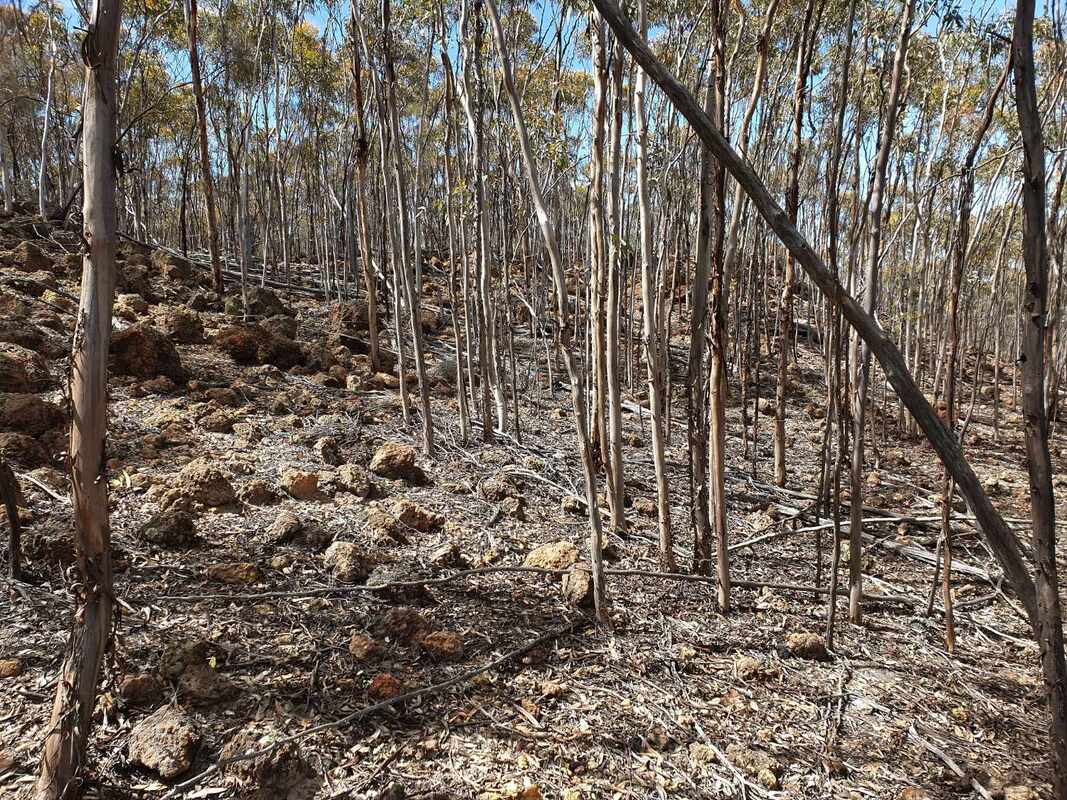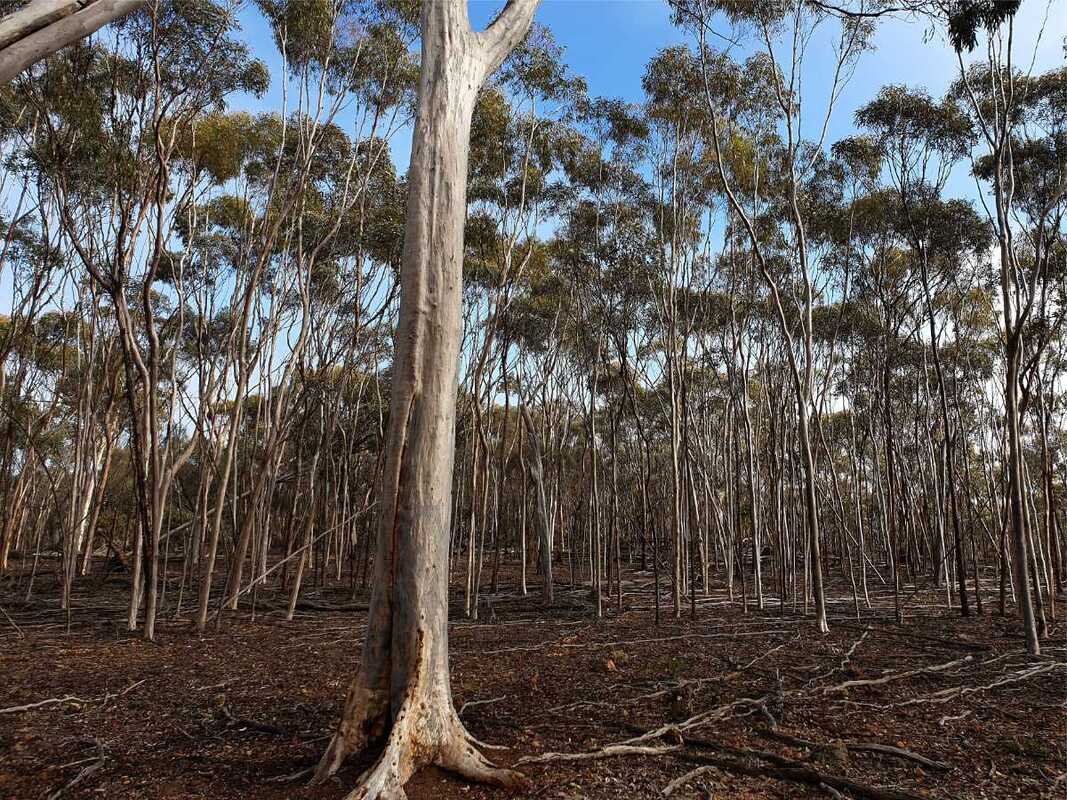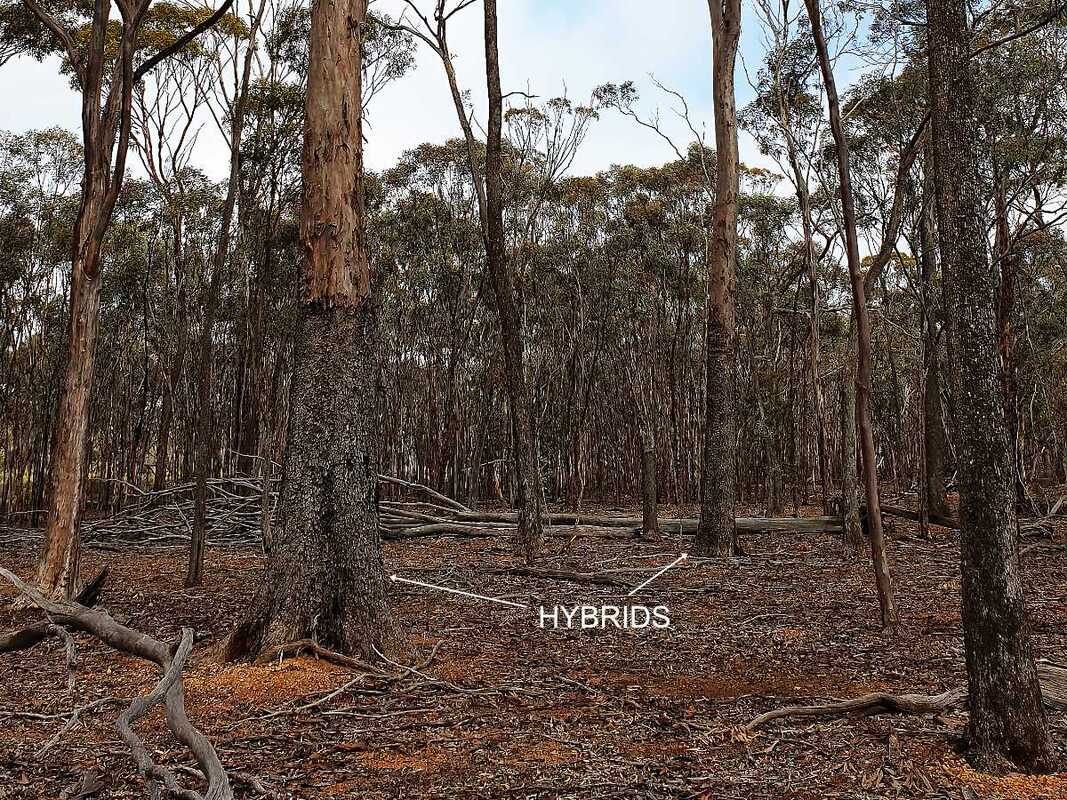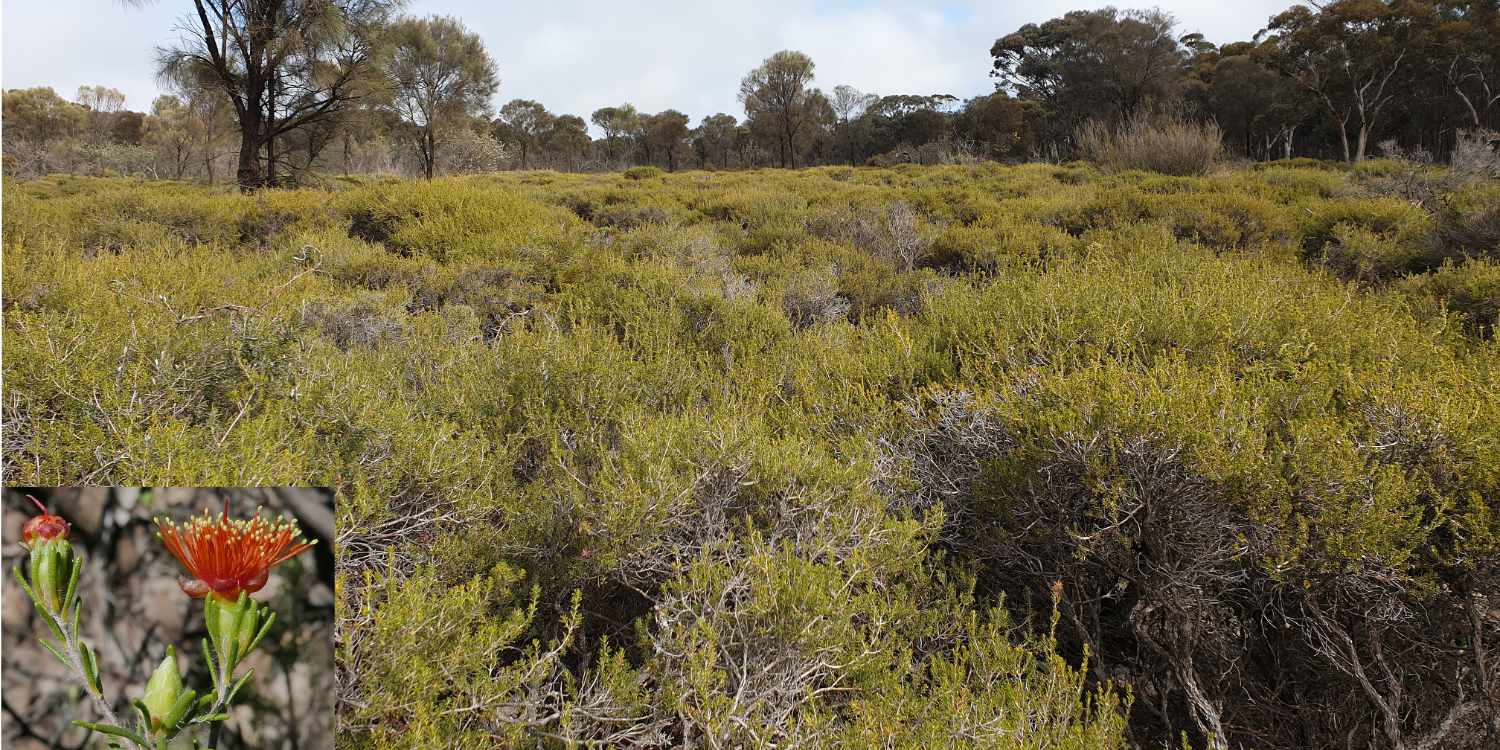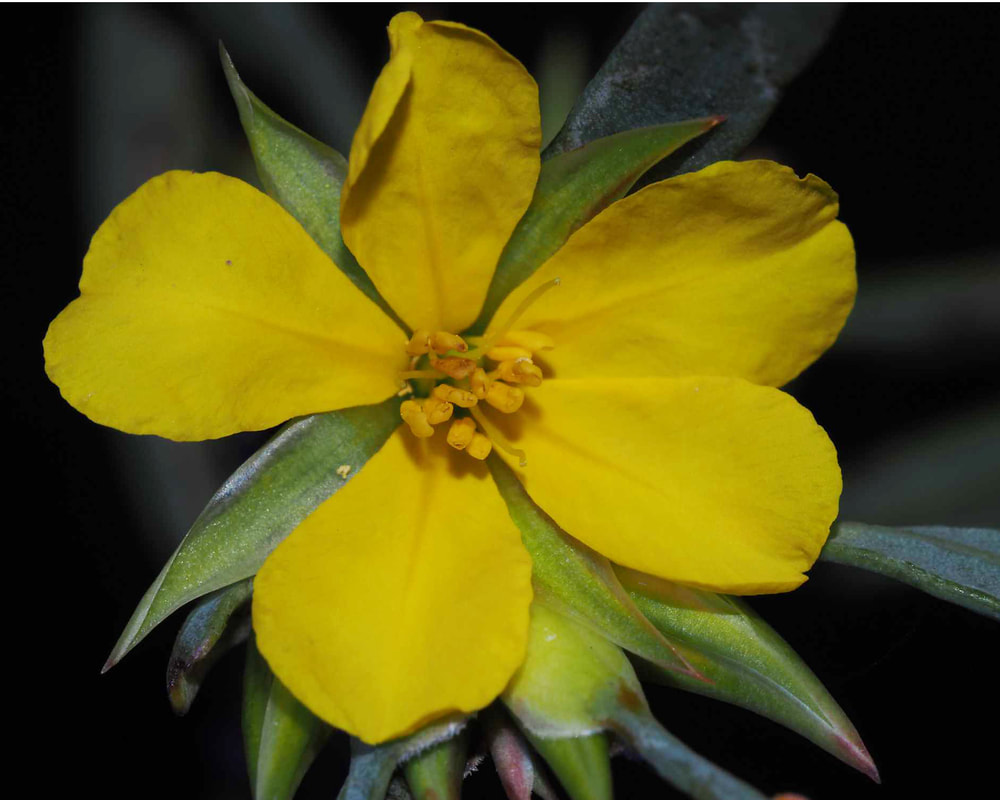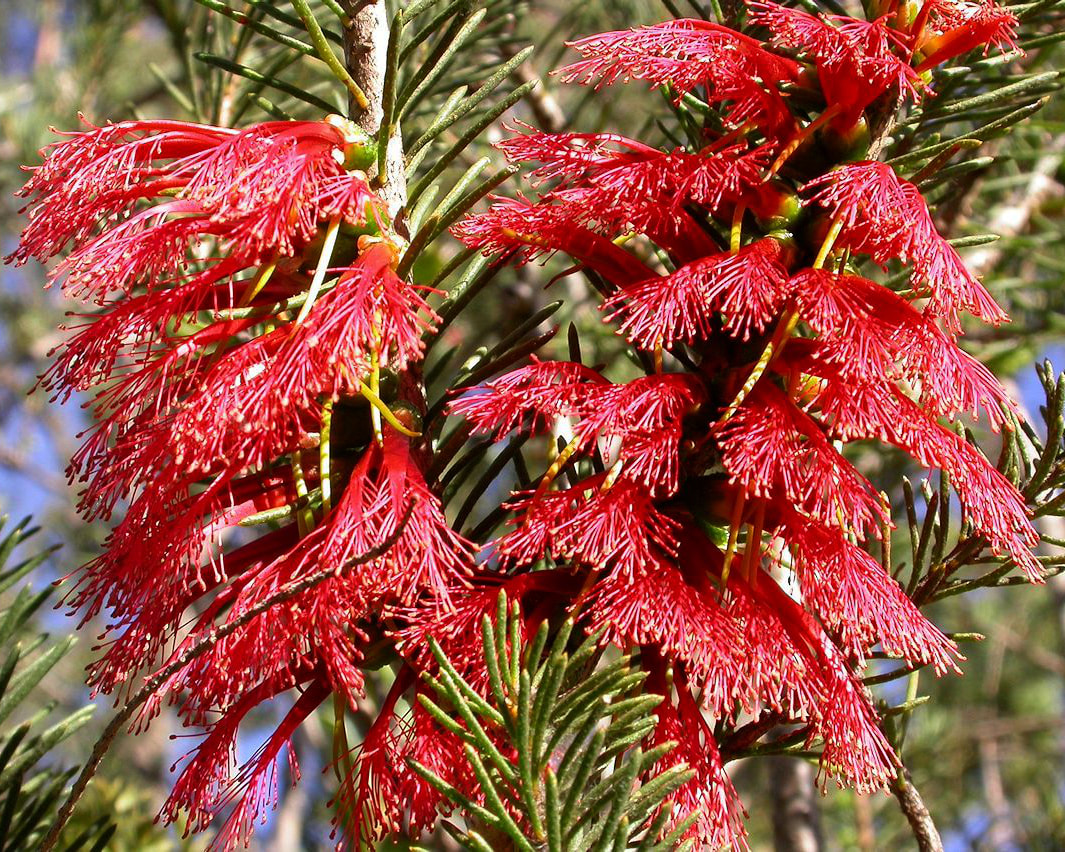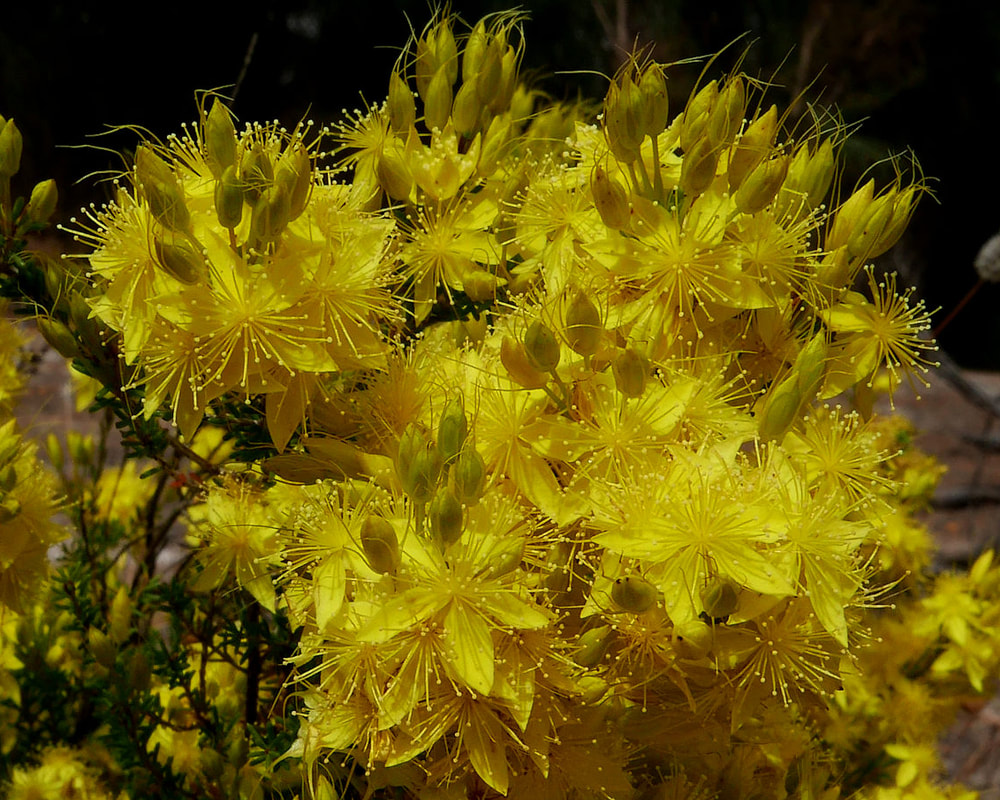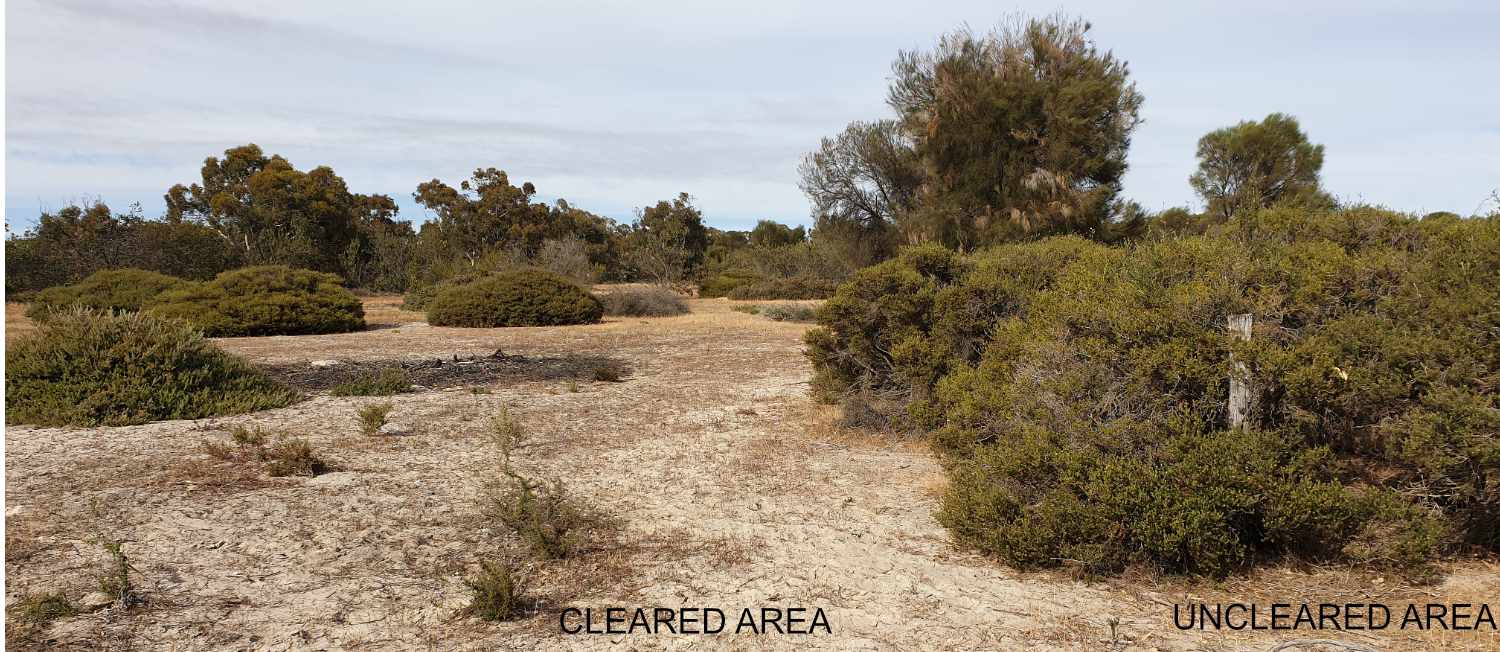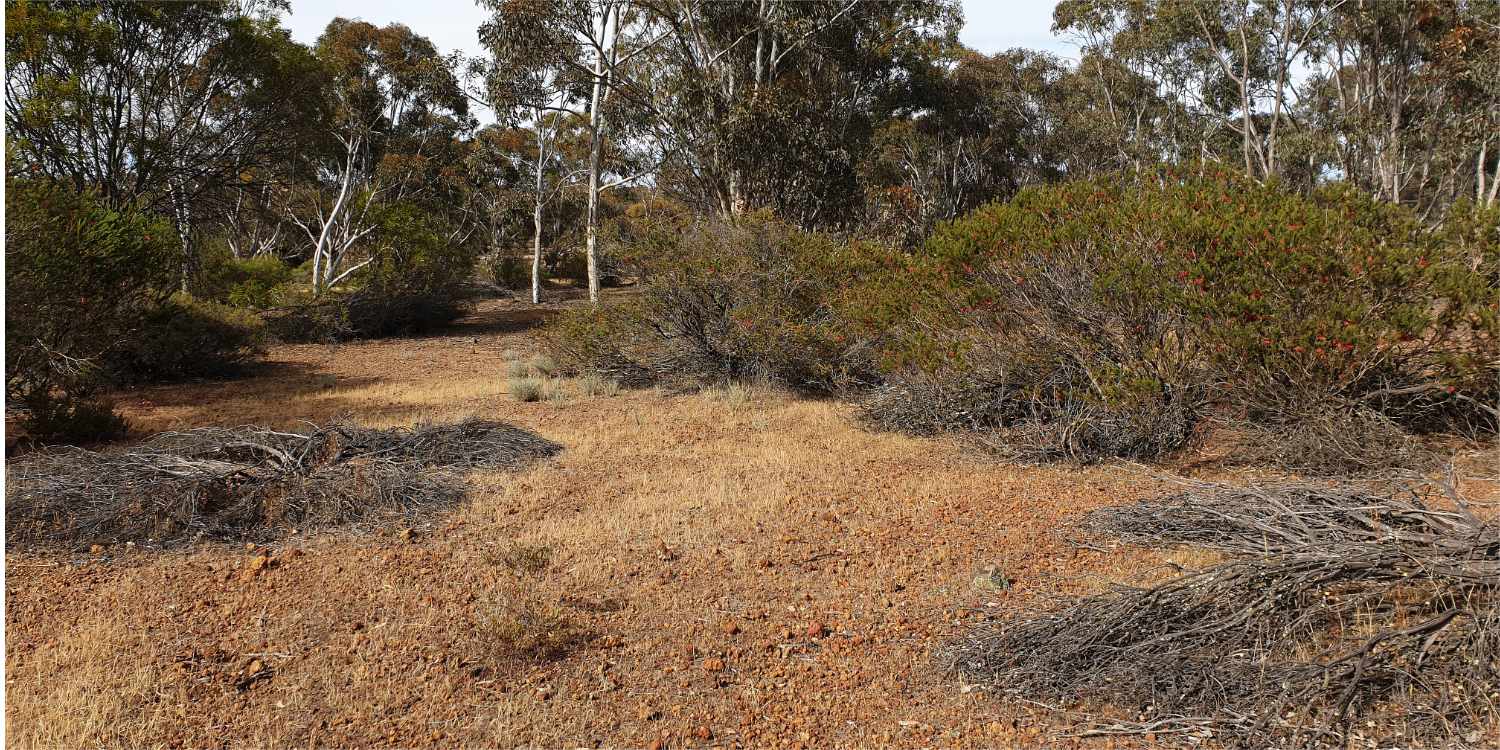However, it is an interesting spot with an attractive and wildflower-rich kwongan sand valley on the southern edge.
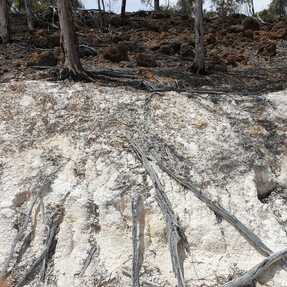 Gravel over pallid zone clay
Gravel over pallid zone clay Like most reserves in the district, Yarling is mostly agriculturally poor laterite or rock. A line of breakaways separate a remnant of the ancient plain from more recent soils on underlying layers to the north and west.
| Rock sheoak woodland is associated with more fertile granite or dolerite rock soil. In the north-western corner, one can see a raised bank in the bush, which is the remnant of the first railway line from Narrogin to Wickepin. Built in 1910, it was dismantled after being replaced by a heavier gauge deviation in 1915, which runs past Wickepin Dam. The following map is a copy from an excellent account of Wrayton Farm by Rhonda Bartlett. |
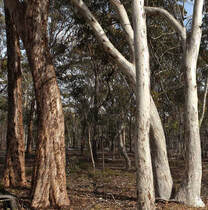 Brown and silver mallets
Brown and silver mallets
on the southern edge there is group of rare Brown Mallet / Red Morrel hybrids.
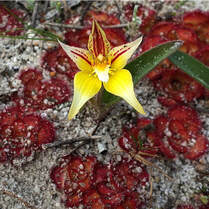 September
September The wandoos and shrubs have grown well, apart from the deep white sand area. However after 27 years there are still extensive bare areas and very little recruitment of new species from the adjacent uncleared area.
Our native bush sandy soils are very sensitive, and recover extremely slowly once organic matter, seeds and native microbes has been reduced.
